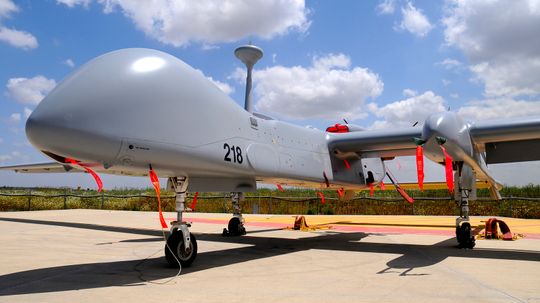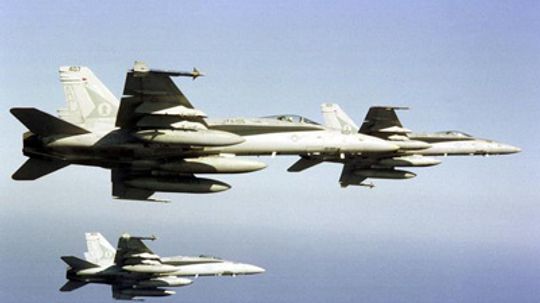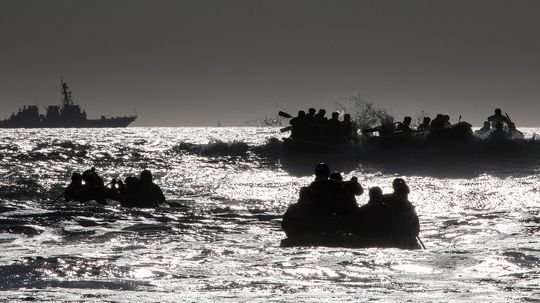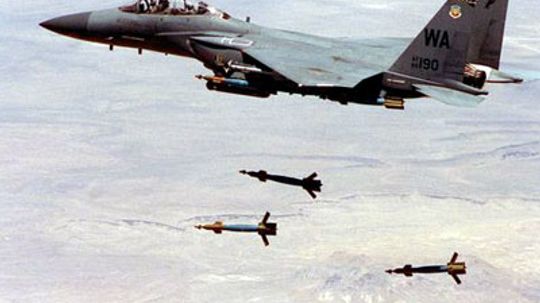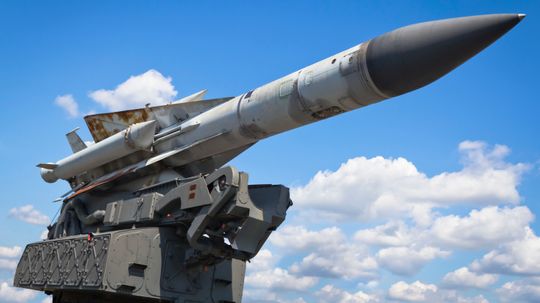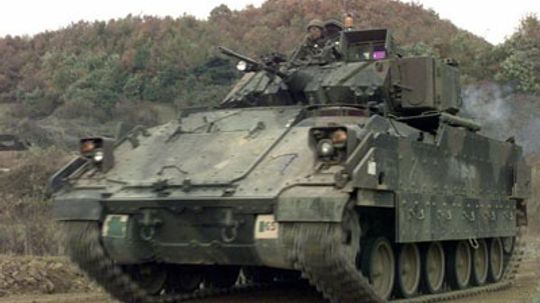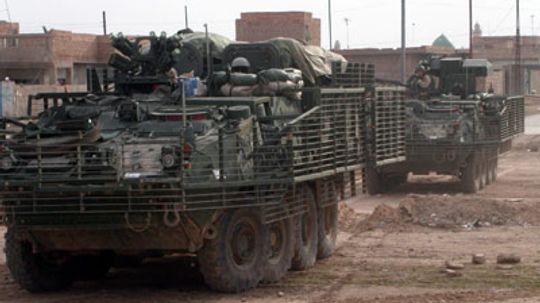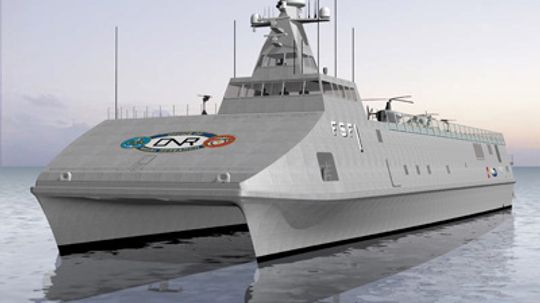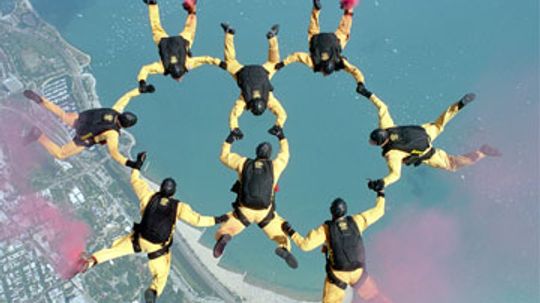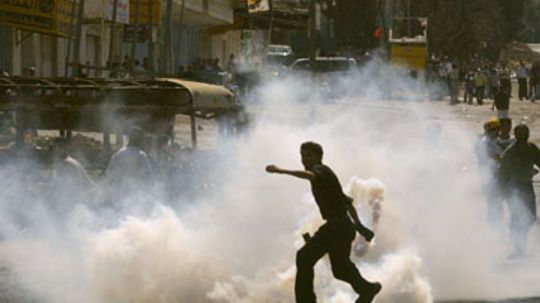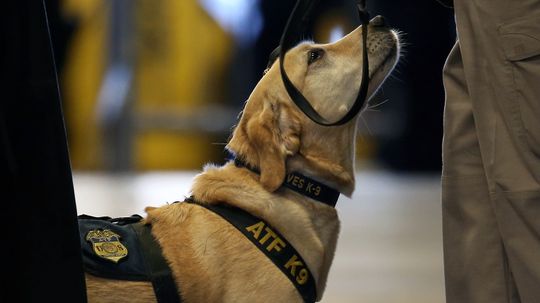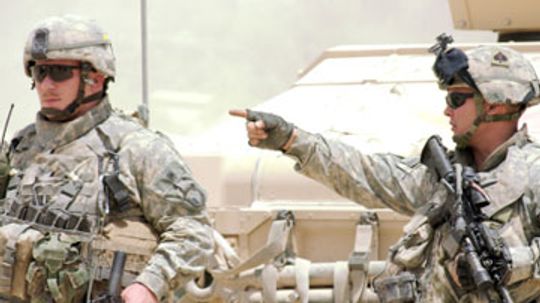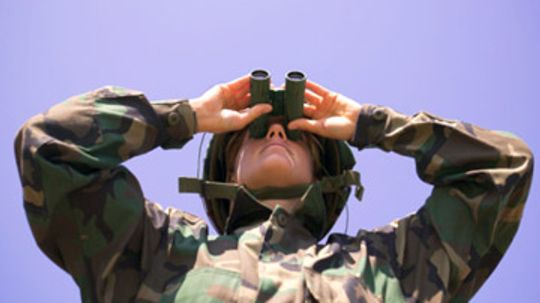Military
Explore the weapons and combat systems used by the armed services. A broad range of topics in the Military Channel includes tanks, aircraft, biological warfare and stealth technologies.
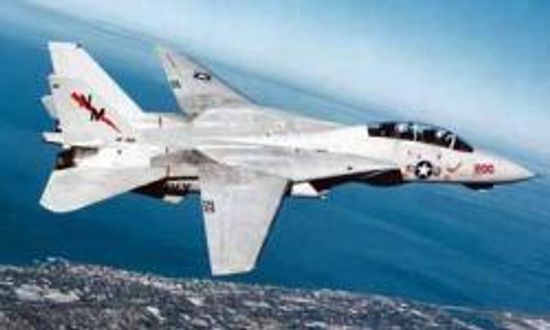
Watch Your Six: Military Jet Pictures
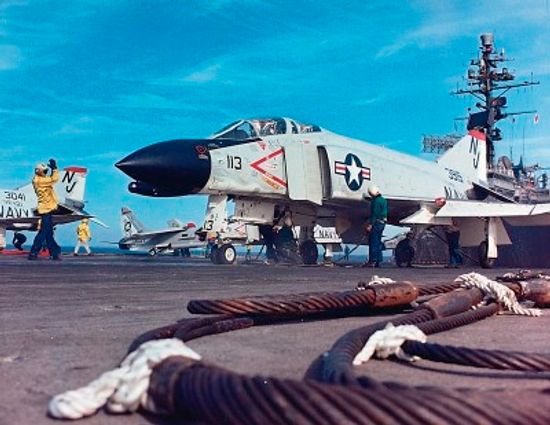
McDonnell Douglas F-4 Phantom II

Lockheed P-38 Lightning

Does Army experience help your civilian career?
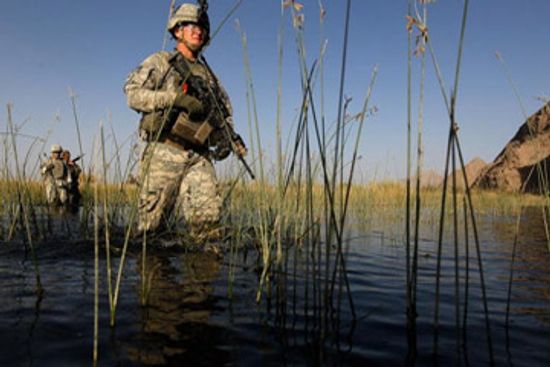
How NCO Professional Development Ribbons Work
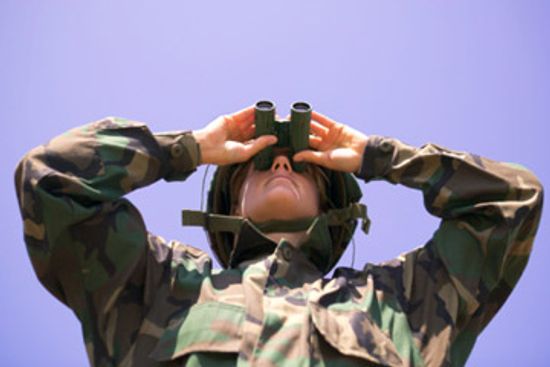
How Army Reconnaissance Jobs Work

How Agent Orange Worked
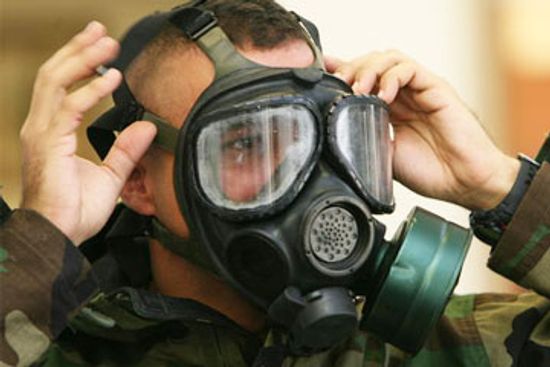
How Biological and Chemical Warfare Works
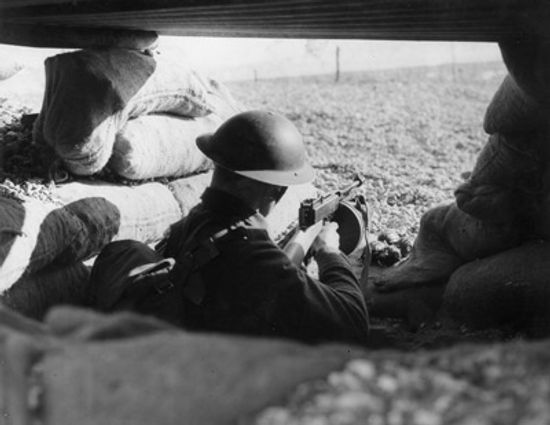
How Mustard Gas Works
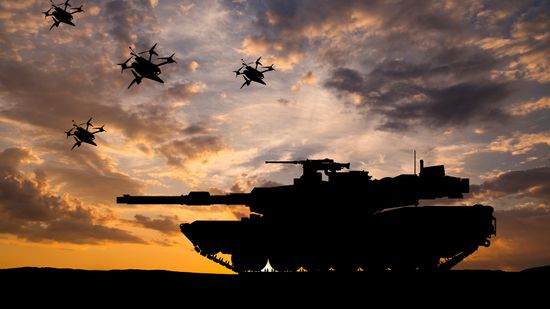
What Is the Strongest Military in the World?

5 Countries That Ditched Their Military Forces
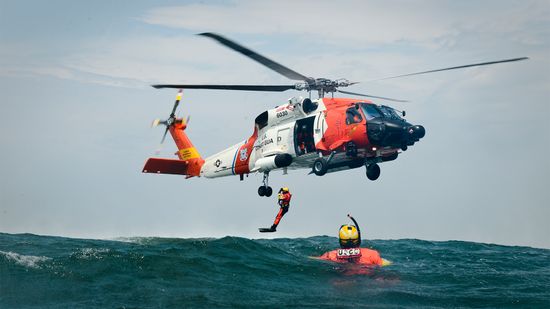
Coast Guard Rescue Swimmers Risk All to Save Lives
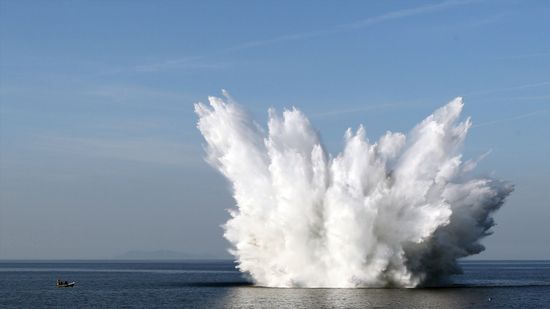
Anatomy of an Underwater Explosion

Can You Really Outrun an Explosion?
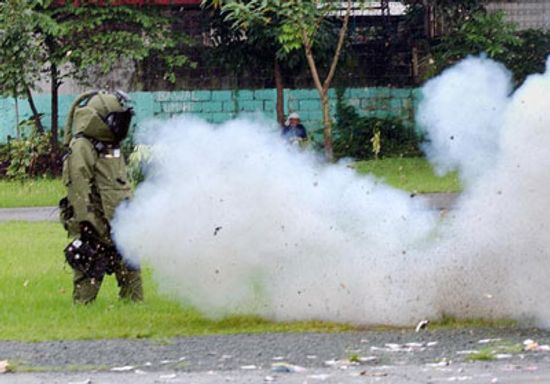
How Blast-resistant Clothing Works

HowStuffWorks Illustrated: Two Legal Gun Modifications

Gun Pictures

What's the world's smallest gun?
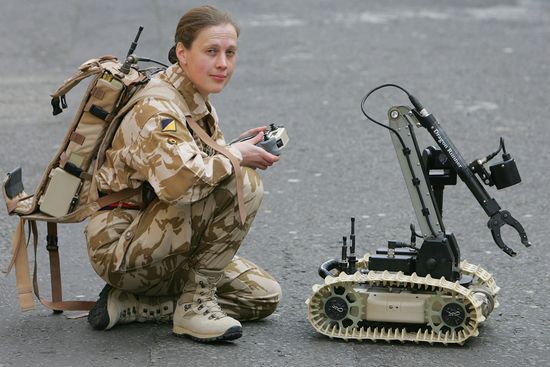
Are robots replacing human soldiers?
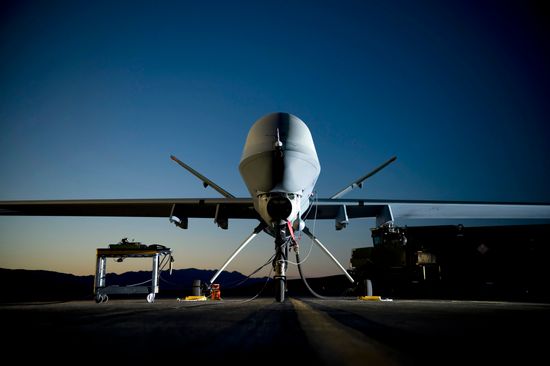
Can drones replace fighter jets?
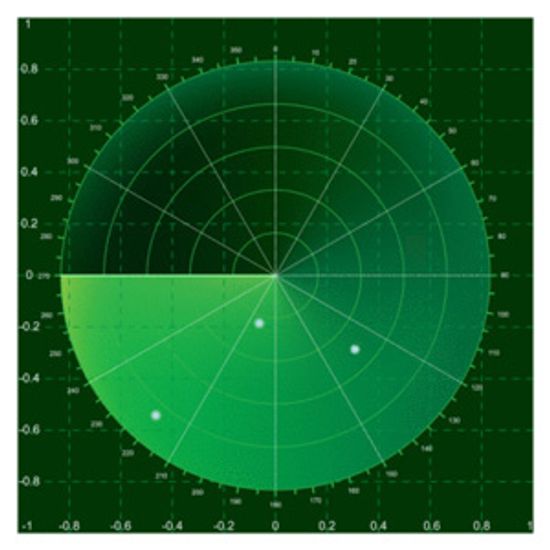
Do wars drive technological advancement?

Submarine Pictures
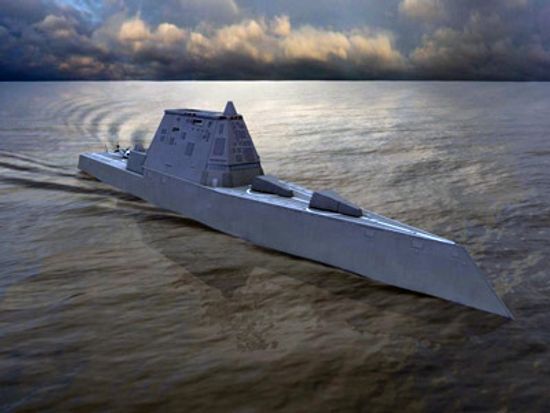
How the Zumwalt Class Destroyer Works

How Aircraft Carriers Work
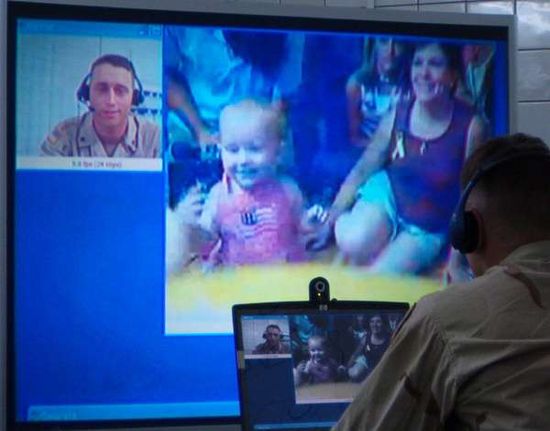
How Military Video Conferencing Works
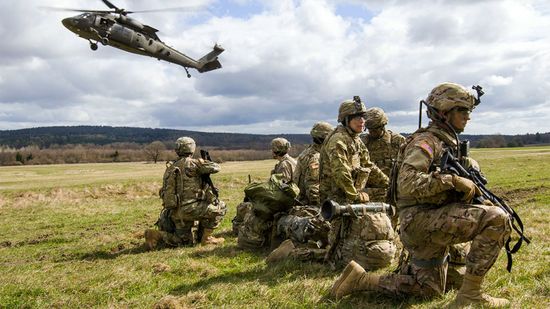
Why a Draft Would Weaken the U.S. Military

What Was the First War?
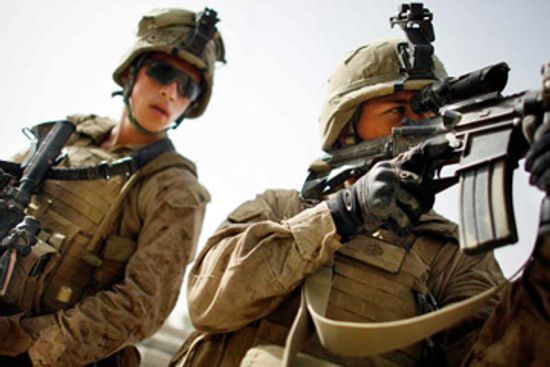
Top 5 Gadgets on the High-tech Soldier

Ghillie: Fishing Aid and Inspiration for Camo Suits

10 Insane Disguises That Actually Worked

How Code Breakers Work
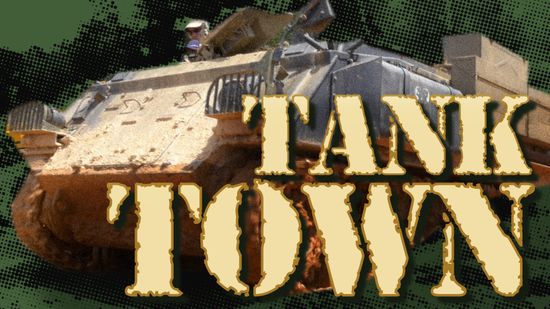
YOU Can Drive a Tank!
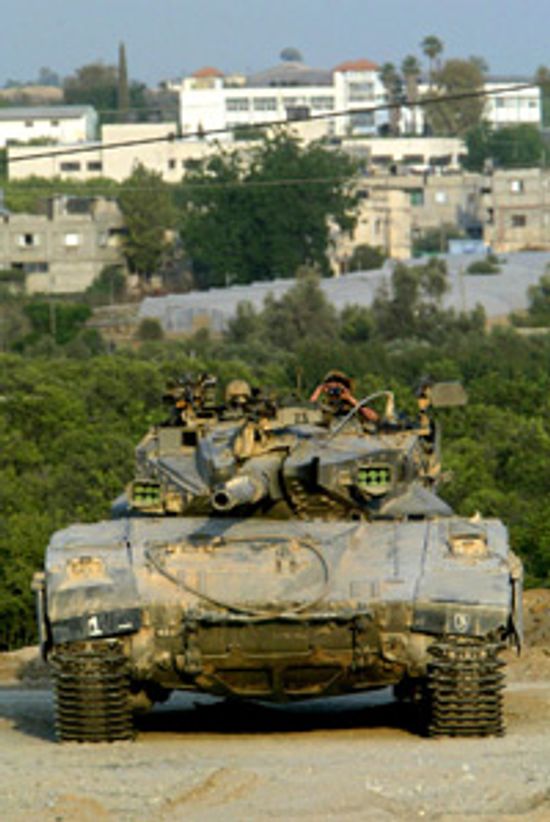
Is the army testing an invisible tank?
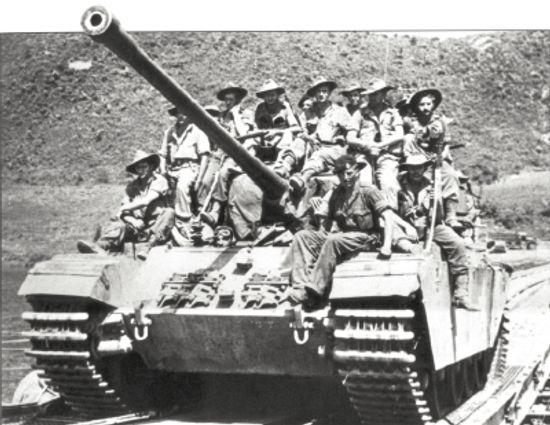
Centurion Main Battle Tank
Learn More / Page 6
Formerly known as "shell shock," research into post-traumatic stress disorder began intensely after Congress requested a study of how Vietnam veterans were readjusting to civilian life in 1983. What have we learned since then about PTSD and what are the symptoms?
By Josh Clark
The Predator Unmanned Aerial Vehicle exemplifies the military trend toward high-tech, low-risk equipment. This remotely-operated spy plane offers the most bang for the human-safety buck.
F/A-18s are now the go-to jet for the U.S. Navy and Marine Corps. The reason? They're plenty fast, they can carry a dizzying array of bombs and missiles, they have amazing onboard electronics and they can be reconfigured to accomplish a range of missions. Check out these amazing military machines.
Advertisement
For most of us, "special ops" is what we see in the movies. But special operations forces are for real, and the U.S. Navy version - the SEALs - completes some of the most dangerous military missions in the world.
There's more to being a sniper than lining up your target in the crosshairs and pulling the trigger -- try lying in the same position for days at a time.
Guns permeate society -- police officers carry them, wars are fought with them, normal citizens own them. These articles will show you how different types of guns function from trigger to barrel.
Bombs come in many different shapes and sizes -- as small as a grenade to as huge as a thermonuclear warhead. See what the inside of a bomb looks like and learn how it's detonated.
Advertisement
Missiles are widely-used in the military because they can reach targets from miles away. Learn about all types of missiles, including cruise missiles, stinger missiles, patriot missiles and even missile defense systems.
The U.S. military uses the Bradley Fighting Vehicle to scout enemy positions and transport troops into hostile territory. With land and sea capabilities, as well as speed and heavy-duty weapons, it's well-outfitted for the job. Learn all about the Bradley and check out some great action photos.
By Kevin Bonsor
The U.S. Army's Stryker is a lesson in flexibility: There are as many Stryker configurations as there are tasks to complete in today's military. Plus, it's easier to deploy than the mighty M1. Learn all about the Army's ambitious Stryker project: anywhere in the world within 96 hours.
By Dave Coustan
Soldiers face danger every day -- detecting landmines, deactivating unexploded bombs and scoping out hostile buildings are tasks that don't always require a human presence. That's where military robots come in.
Advertisement
Nations are facing a more guerilla-style warfare - even at sea, and the equipment must evolve to meet new demands. Enter the Sea Fighter. Learn about this experimental, high-speed, "invisible" ship.
By Kevin Bonsor
The United States Navy is the largest navy in the world. Learn how the Navy is structured, what ships it uses, what life is like in the Navy and how it has evolved over the years.
The National Guard serves many purposes and does many jobs for the United States. But how does it differ from the U.S. Army? And what can the president authorize the Guard to do?
The thrilling roar of fighter jets performing a military flyover is now a common experience at many big events. In fact, the military approves most of the 850 or so flyover requests submitted annually. What does it take to arrange a flyover?
Advertisement
The idea of anyone messing with your mind probably makes you nervous. But what if doctors could put that power to good use without drilling a hole through your skull?
By Robert Lamb
It may make you run. It may make you throw up. It will definitely make you cry. It's tear gas, and it's no fun to be hit with.
By Robert Lamb
You probably have no idea what explosives smell like. But dogs can be trained to detect that distinctive smell, even if it's just wafting through the air.
Winning wars sometimes requires innovative new tools, so it seems possible that new technologies are developed in the heat of battle. But is all technology born from conflict?
Advertisement
From World War I to the conflicts in Iraq and Afghanistan, the U.S. military has rarely been able to fire a shot without bringing along soldiers fluent in a language other than English. How does someone get a position translating for the army?
For as long as America has had soldiers, its army has been scrutinizing information about its enemies to gain an advantage on the battlefield. That's the job of an Army intelligence analyst. So, how do you develop a career in this exciting field?
By Jeff Harder
Picture yourself deep behind enemy lines, taking calculated risks to gather information about the enemy. This is Army reconnaissance work. How can you earn yourself a spot among the reconnaissance ranks?
Whether they're on the front lines treating soldiers' battle wounds or stateside caring for veterans, Army nurses are a trusted and respected part of the U.S. military. Think you have what it takes to be one of the military's medical elite?
Advertisement
Whether you already know a second language or want to learn one, the Army's linguist program could provide you with ample opportunities. Find out how.
Doctors in the U.S. Army may tend the wounded in a combat zone but they're just as likely to be taking care of soldiers on an army base or doing research. Find out the benefits and challenges of becoming an army doctor.
By John Kelly

